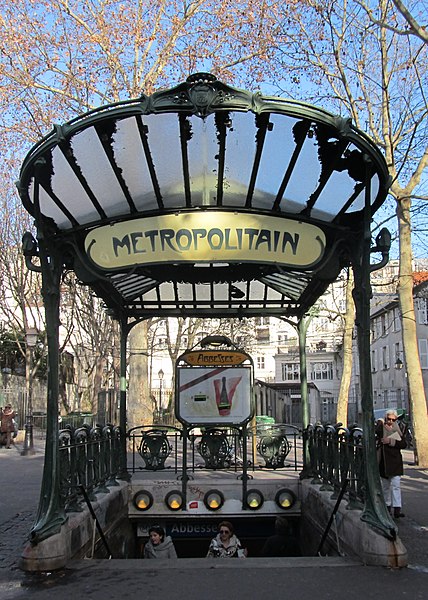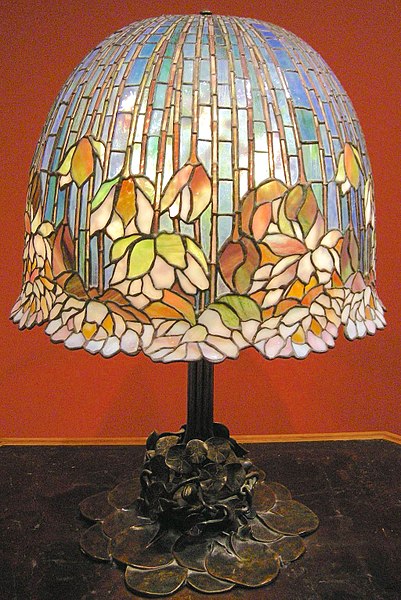Art Nouveau is an international style of art, architecture, and applied art, especially the decorative arts. It was often inspired by natural forms such as the sinuous curves of plants and flowers. Other characteristics of Art Nouveau were a sense of dynamism and movement, often given by asymmetry or whiplash lines, and the use of modern materials, particularly iron, glass, ceramics and later concrete, to create unusual forms and larger open spaces. It was popular between 1890 and 1910 during the Belle Époque period, and was a reaction against the academicism, eclecticism and historicism of 19th century architecture and decorative art.
Image: Abbesses
Image: Otto Eckmann Jugend Nr. 14, 1896
Image: Louis comfort tiffany, lampada da tavolo pomb lily, 1900 10 ca
Image: Louis Majorelle Wall Cabinet Walters 6587
Whiplash (decorative art)
The whiplash or whiplash line is a motif of decorative art and design that was particularly popular in Art Nouveau. It is an asymmetrical, sinuous line, often in an ornamental S curve, usually inspired by natural forms such as plants and flowers, which suggests dynamism and movement. It took its name from a woven fabric panel called "Coup de Fouet" ("Whiplash") by the German artist Hermann Obrist (1895) which depicted the stems and roots of the cyclamen flower. The panel was later reproduced by the textile workshop of the Darmstadt Artists Colony.
Whiplash designs in the interior of the Hôtel Tassel in Brussels by Victor Horta (1893)
Arabesque pattern on a tile from Samarkand (15th century)
Rocaille or rococo table design by Juste-Aurèle Meissonnier (1730)
Waterfall of Kirifuri by Katsushika Hokusai (1830–1834)








